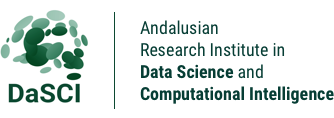Industry 4.0, Predictive Maintenance & Digital Twin
Industry 4.0 represents a paradigm shift in manufacturing, driven by the integration of digital technologies and the physical world. Among its transformative aspects are predictive maintenance and digital twins. Predictive Maintenance (PdM) leverages data from sensors and advanced analytics to anticipate equipment failures, optimizing maintenance schedules and reducing downtime. On the other hand, Digital Twins (DT) create virtual replicas of physical assets, allowing real-time monitoring and analysis. Together, these cutting-edge concepts enable industries to achieve higher efficiency, lower costs, and improved productivity, marking a significant advancement in the way we approach modern manufacturing processes.
Current DaSCI research lines:
- PdM based on anomaly detection models. Anomaly detection models empower organizations with real-time insights into the condition of their resources, facilitating the implementation of effective maintenance policies. At DasCI, we capitalize on our extensive experience developing robust anomaly detection models, utilizing them to implement optimal Predictive Maintenance (PdM) strategies.
- Time-to-event models in PdM. These models play a critical role in Predictive Maintenance (PdM), as they predict the time until a specific event, such as acute machine failure, by analyzing historical data and sensor readings. We focus on developing innovative approaches to enhance the state-of-the-art in this area, particularly concerning classical Cox regression models.
- Remaining Useful Life (RUL) modeling in PdM. RUL modeling is vital in PdM, predicting the time left until asset failure using historical data and sensors. Proactively scheduling repairs based on RUL estimates minimizes downtime and lowers maintenance costs. Our aim is developing robust RUL models based on different ML approaches, aiming to enhance the accuracy and reliability of PdM strategies.
- Digital Twins. Several challenges lie ahead, including: (a) Developing DTs capable of handling vast and diverse data; (b) Creating self-attentive and self-model DTs to adapt and transfer knowledge from learned tasks to new ones; (c) Designing advanced interfaces for deploying DTs within the Metaverso environment, enhancing interactive capabilities for industrial applications.
Related Researchers:
Letra: |
||||
|---|---|---|---|---|
| Name | Area | Cat. | ||
| Chiachío Ruano, Juan | jchiachio@ug7zt2AgS4Dbr.es | DaSCI Technology Applications Area | PhD | |
| Chiachio Ruano, Manuel | mchiachio@ug@30wi_E629Yr.es | PhD | ||
| García Arenas, María Isabel | mgarenas@qdHqLBwQlAa5ugr.es | – | ||
| Melero Rus, Francisco Javier | fjmelero@25OZETugr.es | DaSCI Technology Applications Area | – | |
| Zafra Gómez, Amelia | azafra@ucN9C50JUsBo.es | – | ||










